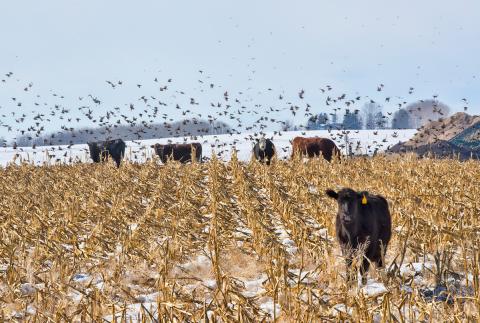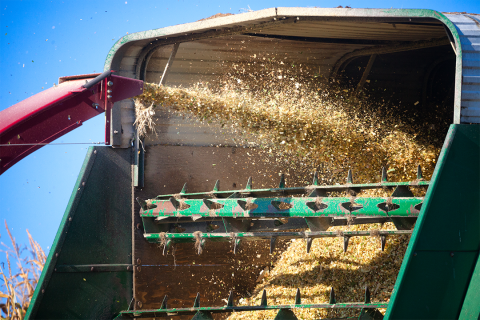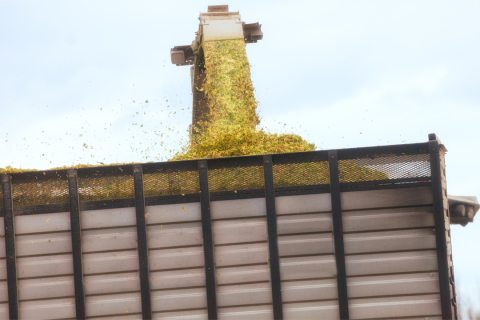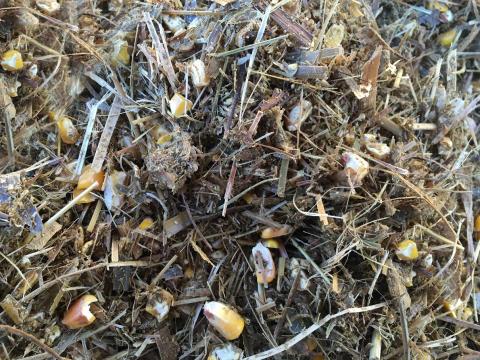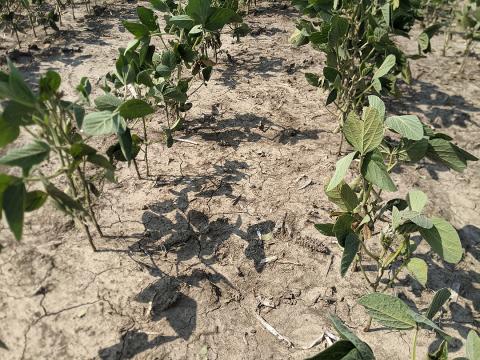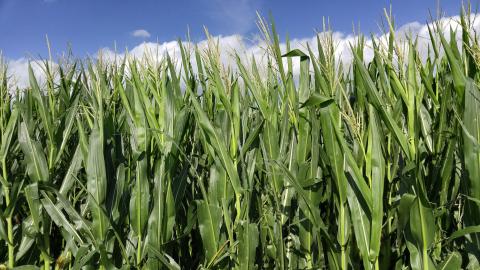Pasture and Forage Minute: Tips for Cornstalk Grazing, Using Bad Hay and Silage
December 26, 2023
Considerations for grazing cornstalks with snow cover and utilizing low-quality hay and silage during periods of low supply and high feed costs.
Pasture and Forage Minute: Cold Stress Preparation, Feeding Brown Hay and Silage Safely
December 19, 2023
Extension educators provide recommendations on preventing body condition loss in cattle during low temperatures and ways to safely feed heat-damaged hay and silage.
Pasture and Forage Minute: Understanding Nitrate Scores, Corn Silage Pricing
September 6, 2023
Extension educators review the importance of understanding nitrate and nitrate nitrogen scores in forage test results, how to price corn silage to salvage drought-stressed crops, and selecting winter annual forages.
Pasture and Forage Minute: Considerations for Corn Silage, Last Cutting Alfalfa and Forage Inventories
August 29, 2023
Best practices for packing and covering corn silage, timing the last fall alfalfa cutting, and taking inventory of fall and winter feed supplies.
Drought-stressed Corn: A Feed Opportunity
August 18, 2023
When grain harvest of drought-stressed corn won’t be a viable option, it can be utilized in several other ways with careful management and care in feeding.
Soybeans for Forage
August 17, 2023
Brown soybean plants that were evaluated by crop insurance at 2-4 bu/ac can be grazed if a grower doesn’t wish to harvest them. They’re just low quality.
Is That Corn Crop Worth More as Silage or Grain?
August 16, 2023
When evaluating whether to harvest a field for silage or grain, there are several factors to consider. Both methods of harvest have advantages and disadvantages depending upon an operation’s goals and objectives.
Pasture and Forage Minute: Kernel Processing for Silage, Hay Harvest and Storage Considerations
August 9, 2023
Nebraska Extension Educator Ben Beckman reviews methods of kernel processing for quality corn silage, reducing hay loss during storage and adjusting for adverse weather during hay harvest.
